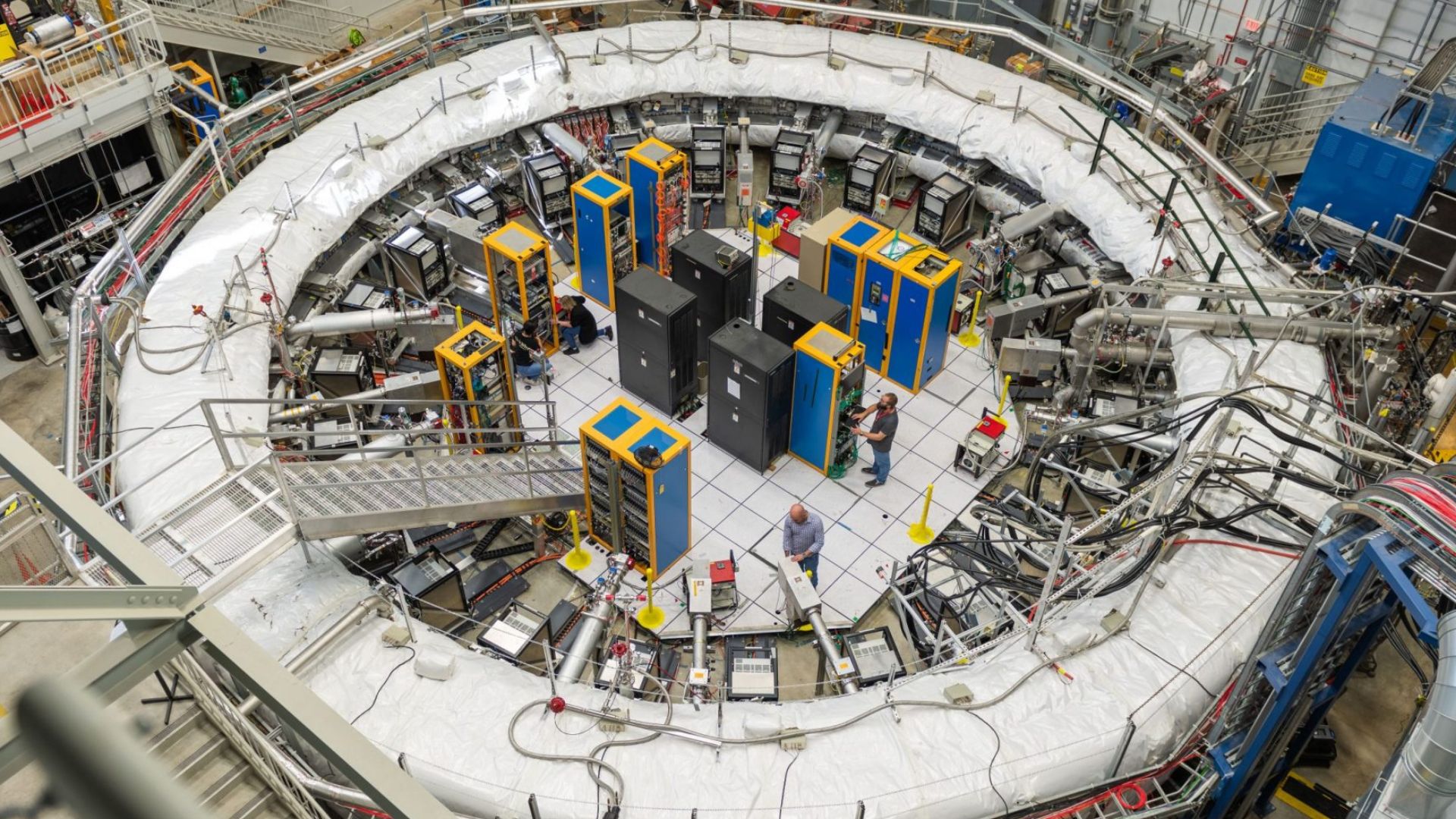The physics of muons, elementary particles heavier than electrons, presents an anomaly. This could be the sign of a new physics: a fifth fundamental force, an additional particle. At Fermilab, the measurement of this anomaly has just taken a new important step.
Do you know the muons? Let us introduce them to you: they are subatomic particles which also turn out to be elementary particles — they are the smallest objects known to physics, and we do not know their composition, hence the notion of particle fundamental or “elementary” to designate them. There are others like it. Muons are closer to electrons, but are heavier, more unstable.
A fifth fundamental force, stronger theory since 2021
Whether muons or other elementary particles, four physical forces — called “forces of nature” or “fundamental forces” or “elementary interactions” — act on them.
These are :
- gravity
- strong nuclear force
- the weak nuclear force
- the electromagnetic force
These interactions govern all the physical phenomena of the Universe, they govern all that you observe and know.
Now let’s imagine that there are not only four fundamental forces. That there is a fifth, still unknown. This would upset the Standard Model of physics. It turns out that a hypothesis suggests it. In 2021, it was even fed by a solid experiment which, measuring strange behavior of muons, indicated the strong possibility of a 5th fundamental force and new particles.
“We are really exploring new territories”
This same research team – at Fermilab (Chicago) – has just announced that it has measured this anomaly even more precisely – linked to what is called the “magnetic moment of the muon”. ” We are really exploring new territory. We are determining the magnetic moment of the muon with unprecedented precision “, rejoices Brendan Casey, senior scientist at Fermilab, in this post of August 10, 2023 (the research paper was submitted to a scientific journal, Physical Review Letters).
For this experiment, the particles are accelerated in a ring (the one in the photograph above), a particle accelerator, at a speed close to that of light. This makes it possible to make measurements of these subatomic particles in action, which is no small feat since their lifespan is two millionths of a second.
But, why does the “magnetic moment of the muon” present an anomaly likely to add new bricks to physics? Fasten your subatomic belts, we have to go a little far in the quantum world.
The gap that didn’t want to be measured
Muons have a kind of small internal magnet. In the presence of a magnetic field, this magnet will begin to oscillate on its axis, like a top. The rate of oscillation corresponds to the famous “magnetic moment of the muon”, an aggregate measurement ” g “. It is g which is problematic. Because as Fermilab explains it in a simplistic way, ” the theory predicts that g should be equal to 2 “. Gold, g is not equal to 2. In itself, at this stage, this is not surprising: we know that muons are disturbed by the “quantum foam”, virtual particles. ” These particles appear and disappear and, like subatomic ‘dance partners’, grab the ‘hand’ of the muon and change the way it interacts with the magnetic field “, illustrates the Fermilab.
Normally, none of this is a hassle. The Standard Model of physics takes this problem into account. By taking inventory of the particles and forces that exist, integrating this quantum foam as well, physicists must be able to predict the shift of g. This gives a measurement called g-2 (g minus 2).
The real problem comes here. There is a discrepancy between the predicted g-2 measurement… and the detected g-2 measurement in the particle accelerator. Let’s use a fictional situation to understand better. You put two 200 gram apples on a scale, knowing full well that this scale has a bug that makes it systematically lose 50 grams. Then you know, even before watching the measurement, that you will get 150 grams on the screen. Now, if you look at the final measurement, and you see a completely different number on the screen, then something unknown is going on.
“Physicists are enthusiastic about the possible existence of particles not yet discovered (…)”
It is this unknown element that fascinates physicists with muons. Because this shift means that something not yet integrated into the standard model of physics is at work. A fifth fundamental force, a new particle. ” Physicists are excited about the possible existence of previously undiscovered particles that contribute to the value of g-2 and would pave the way for the exploration of new physics writes Fermilab.

This is why the precision of the measurement is also important, to allow the work to continue. It is necessary to calculate and understand the difference between the predicted g-2 and the actually measured g-2. The scientists of this laboratory estimate that in 2025, they will be able to obtain the “final” measurement, most precise possible, of the magnetic moment of the muon. This measure will bring physicists even closer to the potential exploration of new physics.
Fermilab has set up extensive research to achieve these results. In 2023, are involved by less than 200 scientists from 33 institutions in seven different countries, as well as 40 students who have become doctors thanks to their work on this subject.
The hypothesis of a fifth fundamental force goes back several years and is not always related exclusively to muons. The objective is to find an explanation for several unexplained subatomic phenomena, as discoveries and installations in physics open more doors to this world of the infinitely small. This research is accentuated at the same time as research on dark matter (postulated, never directly observed) and dark energy (linked to the expansion of the universe).
Subscribe for free to Artificials, our AI newsletter, designed by AIs, verified by Numerama!
